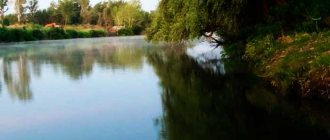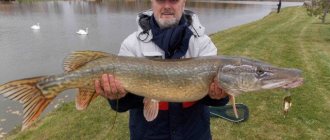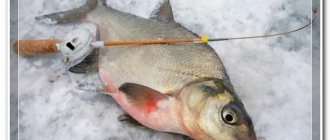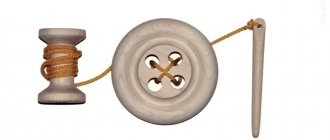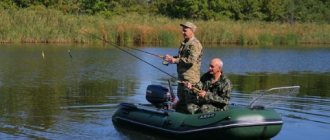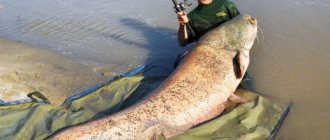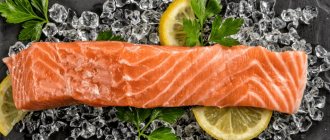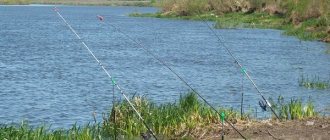Fishing in April - where to look for fish?!
Most fish species become noticeably active in April. The fishermen's catch may include crucian carp, bream, silver bream, perch, and white bream, but most of the fishing in April involves fishing for roach, which is caught both on a float and on a feeder or donkey. Among the predators there are perch, pike and pike perch, asp, but hunting for catfish will have to wait a couple of months, since the April water is still cold for it.
First of all, you should look for fish in April in places with slow currents and the presence of natural food, such as:
- edges of underwater vegetation;
- mouths of tributaries;
- bays;
- bushes and flooded trees in the water;
- underwater holes or, on the contrary, mounds;
- at the border of the current and the coastal calm.
During high water, fish should be looked for in the area of flooded shores, since there is less turbidity in the water, which allows the fish to swim into such places and rinse their clogged gills.
If it’s a warm and sunny day, then you should think about catching April bream, which often comes to the shore in good weather and is caught at a depth of half a meter to one and a half meters. At the same time, you should not forget about the bottom of the reservoir - bream loves a muddy or clay-sandy bottom.
What to fish for in April
The first rule of successful fishing in April is to use thin gear. Even if you have to cast at a significant distance and the use of miniature components (float, weight, etc.) becomes impossible, you must at least take care of leashes with hooks, which must be of minimal thickness, otherwise you may not see a single bite all day .
In April, it is better to fish exclusively with animal bait - worms, maggots, bloodworms, caddis flies, leeches, etc. It is also recommended to use bait to which an animal component is added - chopped worms, all kinds of larvae, etc. It is not recommended to add flavorings to the bait mixture, because too strong a smell can scare away spring fish.
Standard fishing technique:
- raising or lowering the bait;
- small pulls of bait along the bottom;
- fishing with a slowly lowering bait.
Weather plays an important role in successful fishing. It is unlikely that the fish will bite in a strong gusty wind that constantly changes its direction. Or in sudden cold rain. Fishing will be most productive in sunny weather. Even if there is a light drizzle for an hour, then after it ends and the sun comes out, the fish bite will only intensify.
April asp glutton video
Spawning in April
No matter how much fishermen would like to completely devote themselves to their favorite pastime, it is not possible to fish in all regions, despite the prohibitions. The thing is that many species of fish begin to prepare for spawning as April approaches and the water warms up. In this regard, the law banning fishing comes into force. The law is directly related to the region where the fisherman lives. As a result, before you start fishing, you must carefully study the Fishing Rules.
Typically, during the April spawning period, fishing is allowed from the shore in places where fish do not spawn. You can fish exclusively with a float rod with one hook, although in some regions it is also permissible to use a donkey. As for spinning, it is banned almost everywhere. At the same time, we should not forget that the number of hooks on the fishing line has some restrictions associated, as already mentioned, with the region of residence. Read also: Spawning bans in the Rostov region
Important! In the appendices to the Rules there are always lists of spawning places, after studying which you will know exactly where you can sit on the shore with a fishing rod, and where instead of a catch you can actually get a serious fine or even a criminal offense. However, there is always a way out - paid sites, where fishing is not limited by Rules and Prohibitions.
The fishing base "Fisherman's Pier" will delight its visitors:

PROFESSIONAL JAGERS
Over the ten years of the base’s existence, a close-knit and responsive team has developed
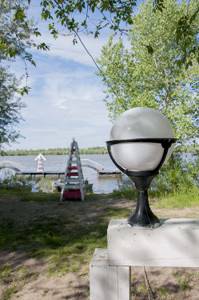
30 METERS FROM THE WATER
The recreation center is located directly on the shore of Akhtuba
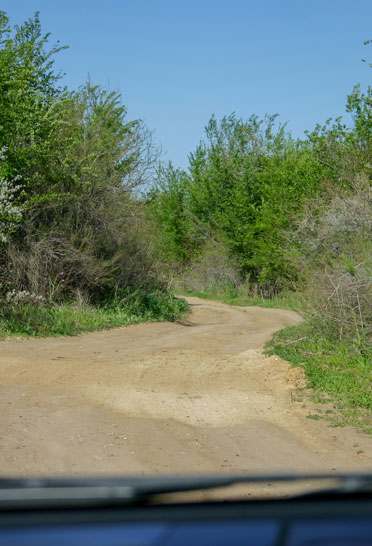
CONVENIENT ACCESS
There is access to the base all year round - both during high water and during spring thaw.
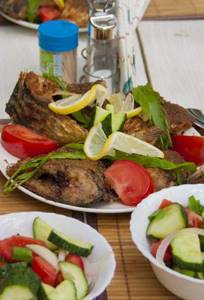
EXCELLENT KITCHEN
The local cafe serves delicious home-cooked food.
The fishing base “Fisherman's Pier” invites you to Akhtuba for spring fishing in April. Our experienced huntsmen will help you find places to catch trophy specimens and take you to any place on comfortable boats.
For perch in April
Compared to March, perch becomes much more active in April. Anglers' catches often include good specimens weighing half a kilogram and more. But mostly these are medium or small “sailors” who greedily pounce on almost any bait of animal origin. They do not disdain maggots, worms, or bloodworms. However, real humpback whales are caught exclusively with small live bait, which can be caught not far from the shore.
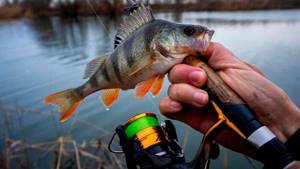
You need to look for perch in small bays, among aquatic vegetation, at the edge of last year’s reeds or cattails, but most often it hangs around flooded bushes, among trees immersed in water, or near driftwood, where it gathers in small schools. This is interesting: Perch spawning
Where and how to catch pike in April
Depending on the region, pike spawning occurs in February-March, including the beginning of April (depending on the region). Naturally, during spawning you can’t count on rich catches, but before spawning or after its end, toothy fish are actively caught both with live bait and with artificial baits.
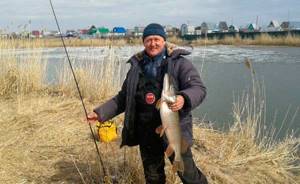
Floaters can enjoy fishing with live bait. There are no restrictions or special “troubles” required here. The tackle can be rough, thick, ugly, but most importantly - strong. The fishing line is from 0.3 mm thick, the float is large, capable of supporting the weight of a small crucian carp or roach, the hook is double or triple, a metal leash is required.
It is better to look for pike at the edge of aquatic vegetation, among flooded bushes and trees, but real trophy specimens will be located at depth, away from the shore. And here you can’t do without a spinning rod, but you can fish with it only after the ban is lifted.
Crucian carp in spring
The stability and intensity of the crucian carp bite in April depends on a number of natural factors. The latitude of the region, the speed of the onset of spring, weather changes - these points do not coincide from year to year. You need to focus not on exact dates and incomprehensible biting calendars, but on natural changes in a particular year.
One year, especially in the middle zone, there may be ice on reservoirs in April. In this case, it will be winter fishing for crucian carp on the last ice. However, the further north you go, the fewer crucian carp, and if there is one, it most likely sleeps buried in the mud. In the south of the European part and Siberia, the last ice in one year occurs in February-March, in another - without it at all, and in March along the banks it is already caught with a summer fishing rod or donka.

When thinking about fishing for crucian carp in April, you need to focus primarily on the water temperature. Usually crucian carp begins to become active when the reservoir warms up to at least 7-8 degrees. If the temperature is lower, you will most likely be able to find him in the pit, half asleep. You can catch it with neat gear and small baits. However, this is not a rule. On southern rivers and reservoirs, even in severe winters, the hybrid is caught from the ice, and in the spring it goes upstream, sometimes through cold water, and is sometimes caught.
- Globally, the bite becomes more active at a water temperature of 10-12 degrees. This is the temperature cutoff that affects the tactics of catching crucian carp in the spring.
- If it’s colder, this means catching passive crucian carp, often in pits, using thin equipment, small animal baits, and being extremely careful with bait.
- If it’s warmer, there’s classic fishing for active crucian carp, including using corn or other plant baits, with the active use of bait and experiments with aromatics.
At a water temperature of about 15 degrees, crucian carp spawn, and not all individuals at the same time - so the bite continues. In some places it’s not just a bite, but a real glutton. This activity continues for some time after spawning, until the end of May-June, gradually turning into summer fishing for well-fed and capricious crucian carp.
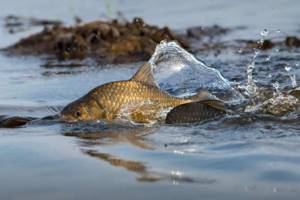
Roach bite in April
Roach and April are two synonymous words for real fishermen. It is in this month that you can catch truly trophy specimens. The main thing is to choose the right place, since the roach at this time begins to actively move to the places of its future spawning ground, along the way grabbing everything that catches its eye.
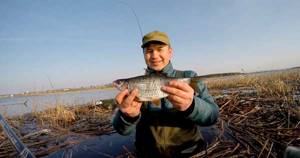
From the shore, roaches are caught by wire, using bloodworms or maggots as bait. If the fishing trail runs far from the shore, then it is better to use a feeder or donka with feeders. Roach becomes most active when the water warms up to 6-8 degrees.
True, such fishing usually does not last long. As soon as a school of fish passes a certain area, the bite sharply disappears. A roach's meal can last from several hours to several days, depending on the size of the reservoir.
With a feeder for April roach
Fishing with English donka
With a feeder, the chances of success will be much greater. This is a universal tackle that can be thrown both 100 meters and 25 meters, under the nearest island of vegetation. Another advantage is that the food remains in the feeder for a certain time and attracts fish, while hand-thrown bait will quickly be washed away and carried away by the water flow.
Successful fishing for bream in April on a feeder requires a competent approach to the selection of gear elements. The length of the rod depends on the size of the reservoir. If this is a wide river with a fast current, then it is recommended to choose a feeder rod 3.6 meters long with a test range of 80-120 g. For fishing in small calm bays, a blank 3 meters long with a test range of up to 60 g is suitable. The tackle is equipped with a spinning reel with a spool size of 3000 or 3500. The main line is monofilament with a thickness of 0.20 to 0.30 mm, and for the leader you can take fluorocarbon 0.14-0.18 mm. The length of this equipment element ranges from 20-100 cm (depending on the strength of the current). The feeder is selected taking into account the fishing conditions. For example, if there is a strong stream in the selected location, then it is better to use a feeder with a lug. The main thing is that its weight does not exceed the upper limit of the rod test. The size of the hooks is the same as for fishing on a float rod. Most often, in feeder bream fishing, rigs with an anti-twist tube, paternoster, and asymmetrical loop are used.
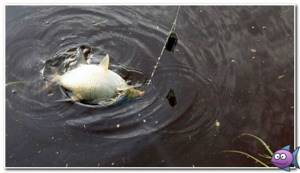
April feeder fishing is not much different from summer fishing. Everything is the same: preparing the place, preparing bait, starting feeding of the fishing point, casting the tackle and waiting for a bite. Unless you need to feed the fish less, 2-3 full feeders are enough to start.
Fishing for crucian carp in April
Crucian carp are still inactive in April. It begins to peck no earlier than the cattail or reeds bloom. However, you can still catch him. The main thing is to choose the right place. Crucian carp loves warm water, which means you need to look for it in shallow water, where the water warms up faster. In addition, the fishing site must have underwater vegetation where the crucian carp will look for its natural food.
When fishing for crucian carp, it is better to use a float rod with miniature equipment. The bait is exclusively of animal origin, most often a dung worm. Less often he will hunt for maggots or bloodworms. To attract crucian carp, it is better to use commercial bait, but you should not scatter it too generously, otherwise the sluggish fish will quickly get enough and leave the promising place.
Fishing for crucian carp on a foggy morning on a float video
What fish can you catch in April on rivers, lakes and ponds?
At the beginning of a fishing trip in April, it is worth refreshing your knowledge about the species of fish that become very active at this time. At this time, roach, rudd and bream are doing well, crucian carp and carp are waking up after hibernation, and predators such as pike perch and pike are quite active. Burbot also shows sufficient activity, storing up nutrients before entering summer hibernation. Somas show some activity. This is facilitated by the water temperature, which usually does not fall below 5 degrees Celsius, and in the southern regions of our country it already reaches 14 - 17 degrees. Accordingly, as the water temperature rises, the fish begin to understand that the spawning period is approaching. And this indicates the need to stock up on nutrients.
The best way to catch roach is with a float, which should not be too heavy. You can fish from the shore, but this is more suitable for catching larger specimens. It is also worth examining the air pressure - it should not fall below 990 hPa and be above 1009 hPa. It is also necessary to mention the bait. In spring, in April, white and red worms are often used. Lures of plant origin are not completely denied. You can use corn or peas as bait.
On the other hand, bream in April is just preparing for spawning, but it does so quite dynamically. This is a sign that this species is worth focusing on. Fish of this species can be found at a depth of 10 - 15 meters, but in April it is best to take them in shallow water, where the depth is no more than 3 meters. In rivers, this type of fish chooses places with the calmest flow possible, in which there is a lot of last year’s vegetation. Very often, bream can be found in thickets of last year’s reeds. You may also find them in bays or corners. Fishing methods are similar to roach fishing, meaning the float works great and the ground is acceptable. It is worth baiting a hook with a white bream with a red or white worm; maggot is popular at this time, and the bream simply cannot refuse the so-called sandwich. Carp baits are also often used.
In April we can also meet tench. There are persistent rumors that fishing for tench is more suitable for the month of May, but many experienced fishermen manage to catch it already in April. Tench, like roach and bream, as well as other types of white fish, begins to actively feed when the water temperature rises. It is best to fish using bottom gear or the float method. But still, the feeder undeniably comes first here. Tench prefer carp scents. So the worms work first.
Carp may also show up from time to time at the April meetings. The problem, however, is finding them. They can move very quickly and give no visible signs. At this time of year they often live in smaller and shallower aquariums. Too much bait in early spring will not be attractive to them due to their slightly slower metabolism. Important information is also the color of the leader - it should look natural, that is, its color should resemble the color of the brown bottom. On the hook we can put protein balls, which are often combined with corn.
And of course, we cannot fail to mention predatory fish species such as pike perch and pike. At this time of year, you should look for them in shallow water not far from last year’s thickets of grass or reeds. This is directly related to the feeding areas of the awakened white fish, which is preparing for spawning and is looking for provisions in these places. At this time, pike perch are caught mainly with spinning rods; minnow wobblers, silicone baits or any other actively playing medium-sized bait are often used as bait. If you choose pike as your target, then you should also use medium-sized baits, according to the advice of experienced spinning anglers
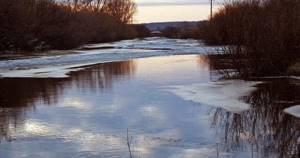
Fishing for bream in April
In April, the bream begins to experience a kind of zhor. It is caught both with a float rod near the shore (albeit with small breams) and with a feeder or donka (larger specimens can already be caught here). You need to look for bream in areas with a muddy bottom, among underwater vegetation or in shell rocks. At depth, bream stands in holes, at the edges, among natural shelter - in bushes, snags, etc.
The best bait for catching bream is a sandwich made from maggot and bloodworms, or maggot and red dung worm. The use of bait is justified and will definitely bring a positive result. It is better if it contains as few flavors as possible.
Roach and bream down the Volga video
Useful tips
- When choosing a fishing location, you should first take into account weather conditions. If the day turns out to be cold, the bream will remain in the depths. In warm sunny weather it will move to the near edges, and in the daytime it will run aground.
- The fished object reacts positively to rising temperatures. Even with warming of 2-3 degrees, it begins to behave noticeably more active. Therefore, you should not ignore weather forecasters' forecasts.
- Experienced bream fishermen advise not to skimp on bait. The larger the bunch of bloodworms or maggots on the hook, the more attractive the bait for hungry bream.
- When fishing at shallow depths near the shore, it is better to abandon the feeder, the fall of which creates a lot of noise. You can feed the point using a special slingshot.
- If the fish eats, but does not swallow the bait, you need to put a shorter leash.
Sudak in April
In early April, pike perch is caught at depth, far from the shore. To hunt it, it is better to use a spinning rod equipped with a silicone bait or a narrow spoon. Milkers can try their luck by attaching a dead fish or sliced fish to a hook.
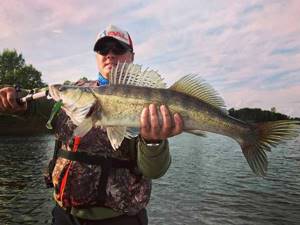
By the middle of the month, when its spawning run begins, the pike perch comes closer to the shore, where it is successfully caught using live bait. It is better to use bleak or gudgeon as bait, as their long, slender bodies are ideal for the narrow pike-perch throat. From the boat, the fanged one takes well on vertical spinners and balancers. In searching for pike perch, an echo sounder will help the fisherman, without which it will be difficult to determine where the holes and any underwater bottom changes are located in the reservoir.
